
Links
Further information about Asbestos regulations is available using the links below.
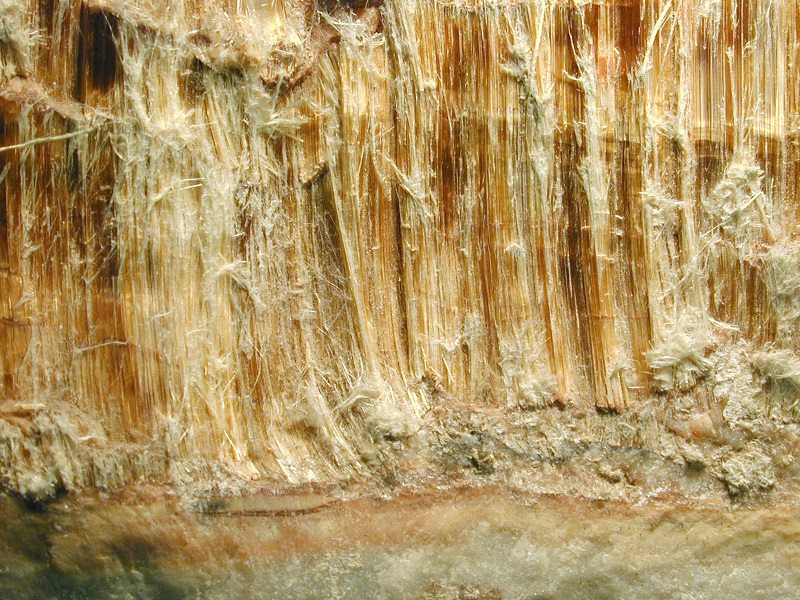

Further information about Asbestos regulations is available using the links below.

We have placed cookies on your device to help make this website better.
I'm fine with thisWe use cookies to give you the best online experience.
Please let us know if you agree to all of these cookies.
Some of the cookies we use are essential for the site to work.
We also use some non-essential cookies to collect information for making reports and to help us improve the site. The cookies collect information in an anonymous form.
To control third party cookies, you can also adjust your browser settings.
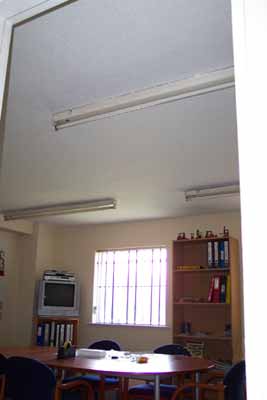
Old decorative ceiling coatings like ‘Artex’ often had small amounts of asbestos added to the material to improve strength. Generally if ceilings are in good condition, they can be left alone and ‘managed in situ’ by annual inspection and maintaining a good paint covering.
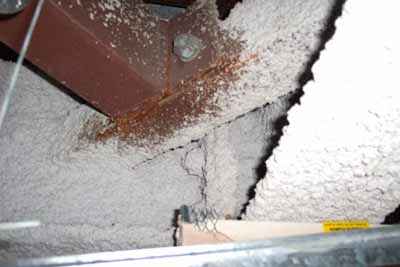
Structural steel beams within the building can be sprayed with a heat resistant coating which, if disturbed or damaged can be highly fibrous. It is very important for premises to know whether the coating contains asbestos or not as it can easily become a significant hazard to health and require specific management.
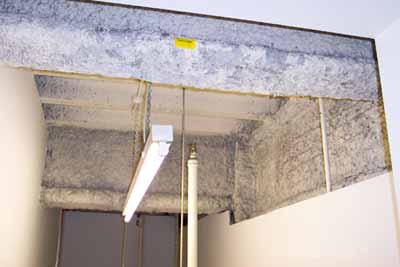
Ceilings and exposed structural beams can be coated in a fluffy flock fire-resistant material which is delicate, highly fibrous and easily disturbed. It is very important for premises to know whether the coating contains asbestos or not as it is easily disturbed and thereby can easily become a significant hazard to health and require specific management.
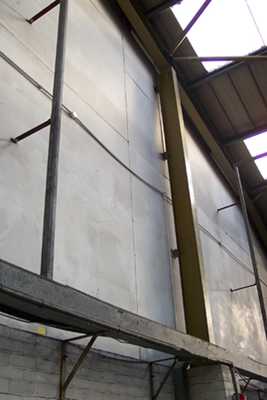
Flat asbestos sheeting was often used for wall panelling either to provide a fire-check partition or simply as a cheap but strong walling panel. It is very important for premises to know whether panelling contains asbestos or not as they can easily be disturbed or damaged and thereby easily become a significant hazard to health and require specific management. Asbestos Insulation Board (AIB) can be fibrous and potentially hazardous if damaged and / or disturbed but can often be left alone and ‘managed in situ’ by annual inspection and simple maintenance such as painting.
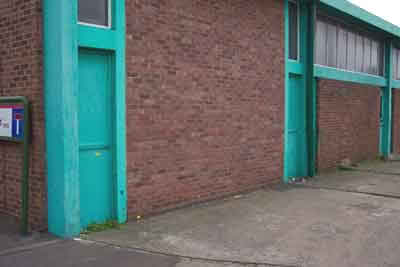
Flat asbestos sheeting was often used to block off windows or to provide a cheap but strong opaque panel below a window.
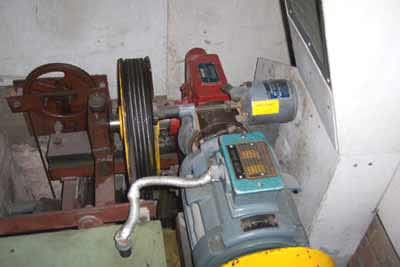
Lift shafts are frequently lined with fire-resistant material to prevent spread of fire from floor to floor. Motor rooms likewise are often lined with similar material and machinery may have asbestos components such as clutch mechanisms and brake shoes. It is important to know if asbestos components are present in order to provide the correct safety information to maintenance staff.

Often the dark dingy dirty basement is forgotten when it comes to cleaning maintenance and health and safety. Old equipment frequently has seals, valves and pipe work gaskets, pipe lagging and insulation which are all potential asbestos locations. It is important to know if equipment has been allowed to deteriorate, as asbestos components may also have degenerated into poor condition and thereby easily become a significant hazard to health and require a clean up and specific management.
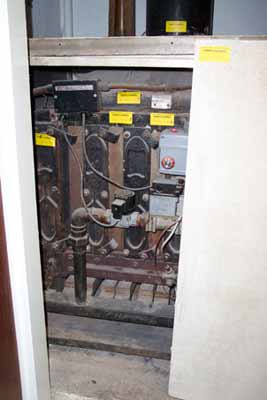
Often located in the forgotten dirty basement and only gets noticed when it breaks down! Old boilers frequently have seals, valves and pipe work gaskets, all over lagging and pipe insulation which are all potential asbestos locations.
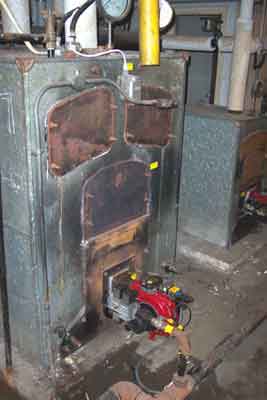
Often located in the forgotten dirty basement and only gets noticed when it breaks down! Old boilers frequently have seals, valves and pipe work gaskets, all over lagging and pipe insulation which are all potential asbestos locations.
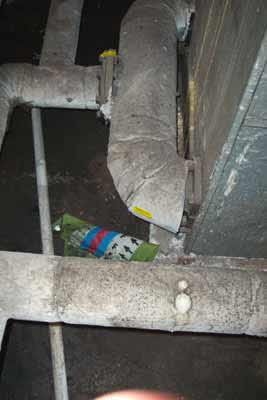
Frequently used to keep heat in or out of pipe work and can be located in basements, lofts, above false ceilings or within the infrastructure of buildings. It is very important for premises to know whether pipe lagging contains asbestos or not as they can easily be disturbed or damaged and thereby easily become a significant hazard to health and require specific management.
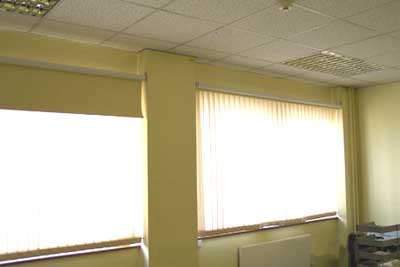
Many establishments have suspended ceilings and whilst the use of lightweight asbestos ceiling tiles is less common now, they are still in use. It is very important for premises to know whether suspended ceiling tiles contain asbestos or not as they can easily be disturbed or damaged and thereby easily become a significant hazard to health and require specific management.
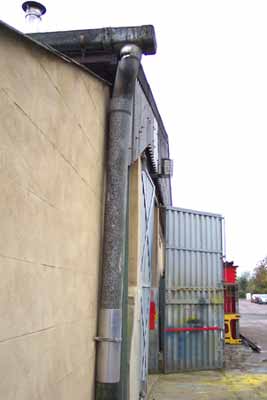
Profile fibre cement products frequently have an asbestos content. Even though the use of asbestos was banned in 1999, old materials were used after that date. Products in good condition and well weathered can generally be left alone and ‘managed in situ’ by annual inspection and simple maintenance. Down pipes near doors and pathways should be painted to shoulder height.
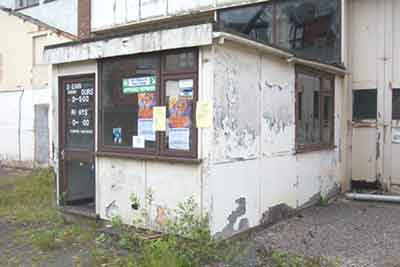
Frequently used for extensions and ‘temporary’ structures, the outer panels are frequently asbestos cement composite and the inner panels can be a similar looking asbestos insulation board (AIB) material. AIB can be fibrous and potentially hazardous if damaged and / or disturbed but can often be left alone and ‘managed in situ’ by annual inspection and simple maintenance such as painting.
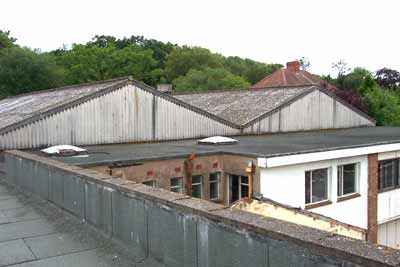
Corrugated profile sheeting frequently has an asbestos content. Even thought the use of asbestos was banned in 1999, old material was used to patch and repair roofs after that date. Roofs in good condition and well weathered can generally be left alone and ‘managed in situ’ by annual inspection and simple maintenance.
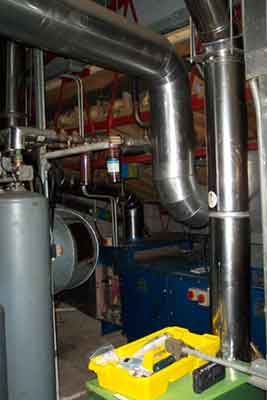
Plant rooms that hold all the plant for buildings often have asbestos components. Boiler seals, valves and pipe work gaskets, lagging, roof felt and insulation are all potential asbestos locations.
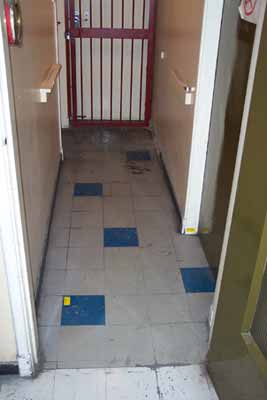
Early ‘plastic’ floor tiles often had a small amount of asbestos added for extra strength in the material. The material is very stable and has a low asbestos content (up to 7%). In normal service, fibre release is unlikely so therefore, under present legislation, they do not need to be replaced. Generally, if tiles are in good condition, they can often be left alone and ‘managed in situ’ by annual inspection and simple maintenance.
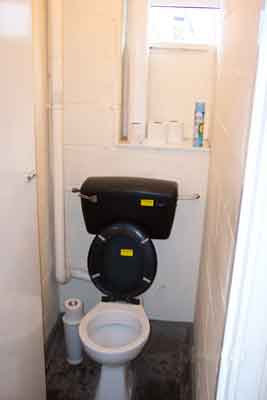
Early ‘plastic’ toilet systems often had a small amount of asbestos added to the material to improve strength. The material is very stable and has a low asbestos content (approx 7%). In normal service, fibre release is unlikely so therefore, under present legislation, they do not need to be replaced. Generally if systems are in good condition, they can be left alone and ’managed in situ’ by annual inspection.
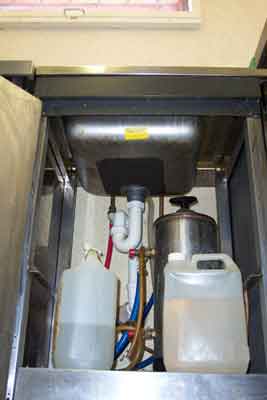
A pad of bitumen felt with asbestos added for strength was frequently applied to the underside of sink units as transit packing from manufacturers. In normal service the material is very stable and fibre release is unlikely and therefore, under present legislation, does not need to be removed. In the event of refurbishment involving the dismantling of the buildings, the contractor should be advised of the asbestos content. If the pad is removed for disposal, it must not be broken up or burnt which may liberate asbestos fibres into the atmosphere.
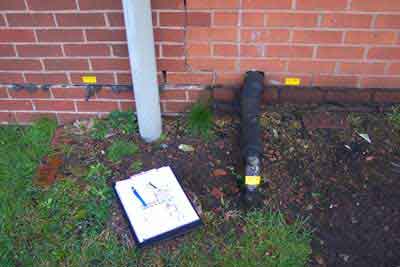
Strips and sheets of bitumen felt with asbestos added for strength have been used to improve the waterproof integrity of the footings of older buildings. In normal service the material is very stable and fibre release is unlikely. Therefore, under present legislation, does not need to be replaced but can be managed ’in situ’. In the event of refurbishment involving the dismantling of the buildings, the contractor should be advised of the asbestos content. If the felt is removed for disposal, it should not be broken up or burnt which may liberate asbestos fibres into the atmosphere.
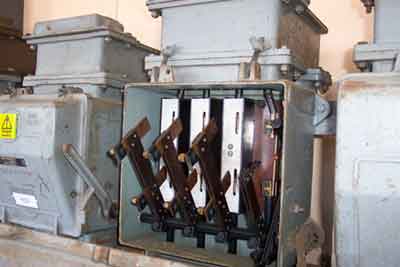
‘Old Style’ cast iron switch gear typically contains asbestos components, namely flash strips, separators and asbestos rope gasket door seals. The materials have a high asbestos content but under normal operational conditions there would be no access required to the inside of units, other than by electricians. Electricians should be advised of the asbestos content.